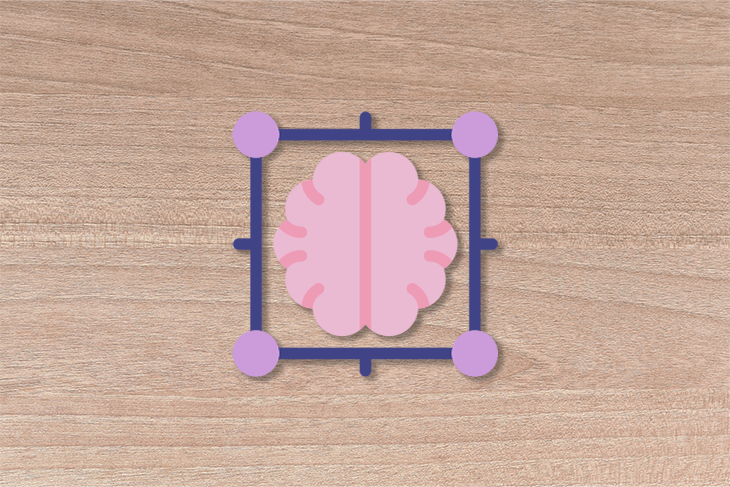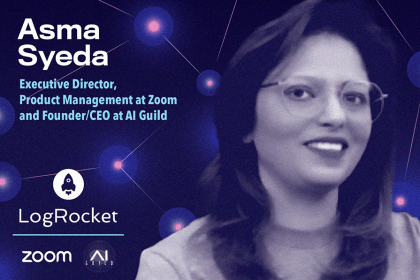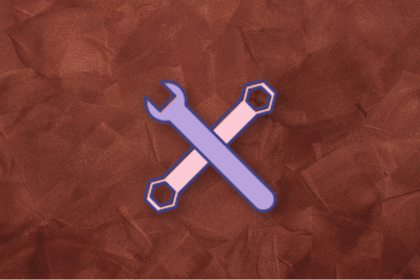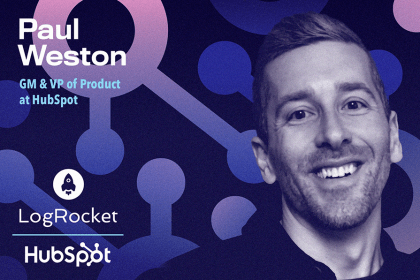In this article we discuss the concept of convergent thinking and the role it plays in product management. We detail strategies to incorporate convergent thinking into the product development process, alongside the benefits of incorporating it into your work.

Joy Paul Guilford, an American psychologist, first introduced the term “convergent thinking” in 1956. The term describes a thinking style that strives towards finding one well defined solution to a problem. It is an effective approach when answers are readily available and need to be pursued. However, a convergent thinking approach only allows for one answer to a problem, leaving no room for ambiguity.
In product management, convergent thinking is used to list the available solutions and identify the most promising product solution. The goal of convergent thinking is to logically reach a conclusion by organizing and analyzing all the available solutions based on the information available. The convergent thinking approach is generally used during the prioritization of the list of features to be implemented in a product. It aids in making important decisions and bringing clarity to complex problems.
Convergent thinking identifies the best solution for a problem based on logical thinking. In product management, product managers are often developing new products or features. Let’s consider an example where a product manager is developing a new product for a company. The product manager first researches the market to understand the needs of potential customers. This research might include conducting surveys, focus groups, and competitor analysis.
Next, the product manager has to narrow down the major pain points of the users and then use divergent thinking to come up with all the possible solutions to address them. After gathering qualitative and quantitative data to support said solutions, convergent thinking allows you to narrow down the best possible solutions to implement as features in the product.
The product manager can use convergent thinking to evaluate multiple options and identify the best solution, thus ensuring that the new product meets the needs of the target market and is developed efficiently and effectively.
Convergent thinking is an important problem-solving skill that helps narrow down options to find the best solution to a problem. It is crucial to utilize this skill in business and product management decision-making.
By using convergent thinking, product managers and executives can critically evaluate different options and make informed decisions based on the information at hand. Moreover, it helps in identifying the most efficient and effective solution to a problem, saving time, resources, and effort.
Alongside this, convergent thinking is essential in creative processes such as brainstorming, ideation, and innovation, where it is necessary to identify the most viable options from a large number of potential solutions. As a result, understanding and utilizing convergent thinking can enhance an individual’s problem-solving abilities, increase productivity, and lead to better outcomes.
Convergent thinking and divergent thinking are two modes of thinking used for problem-solving and idea generation. Convergent thinking is a cognitive process that involves identifying the best solution to a problem. It is a logical approach that derives the correct answer or solution based on reasoning, analysis, and deduction.
In contrast, divergent thinking is a thought process that involves generating a wide range of possible solutions or ideas for a problem. It is a non-linear and creative approach that encourages free-flowing and unconventional thinking. Divergent thinking is focused on imagination, intuition, and exploration to generate multiple solutions.
While convergent thinking is used to deduce the most effective solution to a problem, divergent thinking is used to generate as many ideas or solutions as possible. Convergent thinking is about evaluating and selecting the best option, while divergent thinking is about exploring and expanding possibilities.
Both convergent and divergent thinking are valuable for problem-solving and decision-making. However, they are used in different situations and require different skills and mindsets.
Let us take a look at some specific strategies and techniques for incorporating convergent thinking into the product development process:
Before diving into the product development process, it is crucial to define the problem that the product will solve. This helps in tracking the team’s efforts and ensures that the team focuses on the identified problem.
To create an effective product, it is pivotal to gather information about the target audience, market trends, pain points, and competitors. Conducting detailed research helps to identify the most viable solutions. This in turn helps to determine the most efficient and effective course of action.
Once the problem has been defined and research has been conducted, the team needs to brainstorm the possible solutions. The divergent thinking approach generates a wide range of ideas (some of which may not be feasible), but can be narrowed down later using convergent thinking.
After generating a list of potential solutions, the team should evaluate each idea based on a set of predetermined criteria. This helps to narrow down the options and select the most promising solutions. Convergent thinking is used to evaluate all the identified solutions and then narrow it down to the best possible solution based on the information available.
As a next step, the team should create prototypes or an MVP (minimum viable product) and test it with the target audience. This helps to gather feedback and to identify any issues or areas for improvement.
Based on the feedback and data gathered during the testing phase, the team can refine the product and make any necessary adjustments before finalizing the product design.
Another situation where convergent thinking is used in product management is when there is an issue that users face in the production application. The product managers generally evaluate the problem faced and evaluate possible solutions to fix the problem as soon as possible based on how critical it is. Convergent thinking helps in narrowing down to the best possible solution to fix an issue in such situations.
Incorporating convergent thinking into the product management helps you arrive at the most effective solution based on the data available.
Product managers are owners of the product and have to continuously evaluate the product from the customer’s perspective to improve user experience. Depending on the stage in the product life cycle, product managers use convergent thinking in various situations. Some of these situations include:
Let’s look at an example of a streaming application that provides content to users for entertainment. As a product manager of this application that has been launched in production, you come across major problems faced by the users through various sources like surveys or application reviews.
Say there are three major problems: login issues where multiple users are sharing an account, buffer time to load a video, and users are not able to add videos in their watchlist. Here the product manager has to use a convergent thinking approach to evaluate the features and set priority based on the information available for these major issues. These three features should be evaluated on parameters like criticality of the issue, number of users impacted, and effort for the solution to derive the priority.
Product managers collaborate with design teams to go through various ideas to finalize user experience. Using convergent thinking, it takes several iterations to evaluate the available ideas in terms of feasibility, viability and desirability. Designers also can use convergent thinking to analyze, sort, evaluate and modify design ideas created using divergent thinking.
Divergent and convergent thinking is often used by designers to build customer-journey maps, experience maps, service blueprints, and also to ideate new design ideas or prototypes. For example, designers may come up with multiple design approaches for implementing a feature. In such cases, the teams can brainstorm based on feasibility, ease of use, effort involved to evaluate design options and decide one that aces all the parameters.
When you build a product from scratch, the ideal process is to conduct market research, identify the user pain points, and then find solutions to address those. The divergent thinking approach is used to generate as many creative ideas as possible that can be implemented in a product, but then convergent thinking is used to prioritize these ideas and decide what needs to be implemented.
For example, a new application (MVP) offering rides has to be launched. It can have a lot of features like booking rides based on size of vehicles, scheduling rides, booking inter-state rides, payment options, wallet integrations, displaying a map that indicates the location of the booked ride, account details, and rides for users with special needs. To launch an MVP, it must only have the basic features that enable users to enter their pick up and destination information and then book the ride with their payment method. Using convergent thinking, the basic minimum features required for the user can be filtered and prioritized for creating an MVP.
Convergent thinking is useful in problem solving and driving data based-decisions because it helps you:
When convergent thinking is applied to arrive at a decision or to choose one correct answer based on available information, it helps you arrive at the conclusion faster. Convergent thinking enables us to sort out all the available options and then compare certain parameters based on the information available. This lets you organize your thoughts and derive a conclusion supported much faster.
With a convergent thinking approach, all the facts for the available options are laid out to help determine the most feasible, viable solution. The decision making process leaves no ambiguity among the team members and thus aligns them towards the shared goal.
Convergent thinking is helpful in situations where the problem does not need a complicated solution. Some problems have a straightforward solution and the convergent thinking approach helps in identifying such solutions.
Divergent and convergent thinking have their own advantages and disadvantages, yet both are required to generate creative solutions and make the correct decisions. Regardless of your role, convergent and divergent thinking can be used together to get the best results in problem solving. The key note is to understand when and how to use both convergent and divergent thinking approaches to help solve problems with creativity and efficiently.
LogRocket identifies friction points in the user experience so you can make informed decisions about product and design changes that must happen to hit your goals.
With LogRocket, you can understand the scope of the issues affecting your product and prioritize the changes that need to be made. LogRocket simplifies workflows by allowing Engineering, Product, UX, and Design teams to work from the same data as you, eliminating any confusion about what needs to be done.
Get your teams on the same page — try LogRocket today.

Trey Courtney talks about his process for evaluating partnerships or acquisitions and how he successfully implements these initiatives.

Asma Syeda shares the importance of responsible AI and best practices for companies to ensure their AI technology remains ethical.

What hard skills do PMs need in 2025? Learn how AI tools can help you level up in SQL, Figma, A/B testing, and more.

Paul Weston talks about “quantifying the unquantifiable,” i.e., bringing in objective data for things that otherwise seem hard to measure.